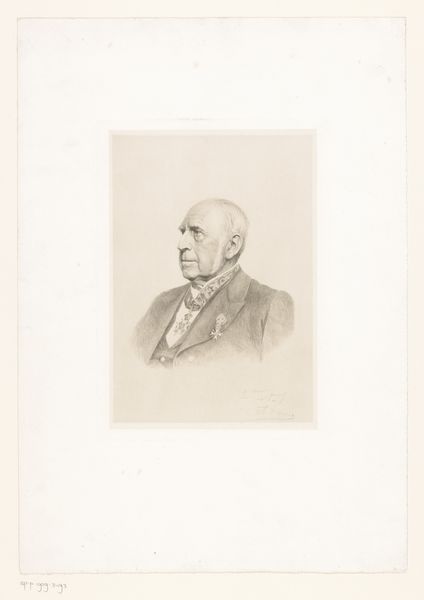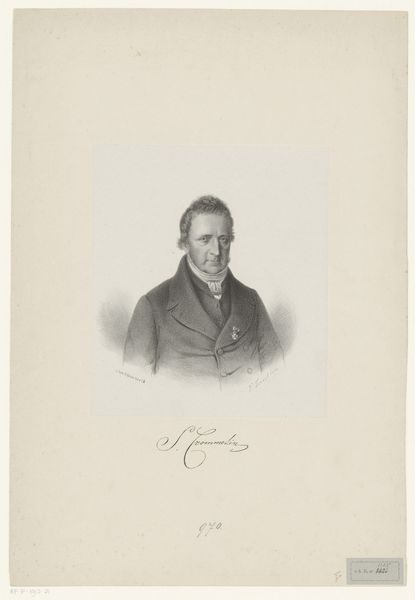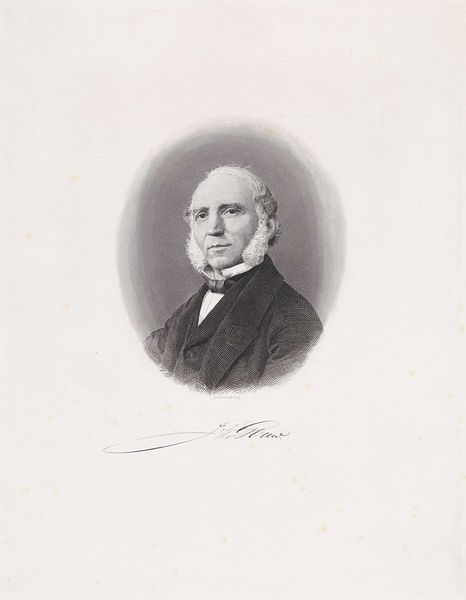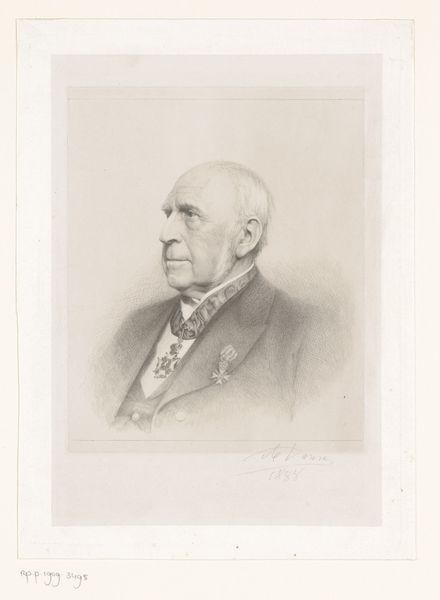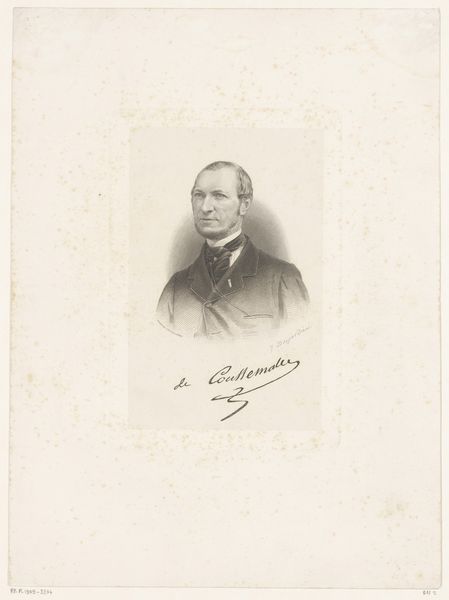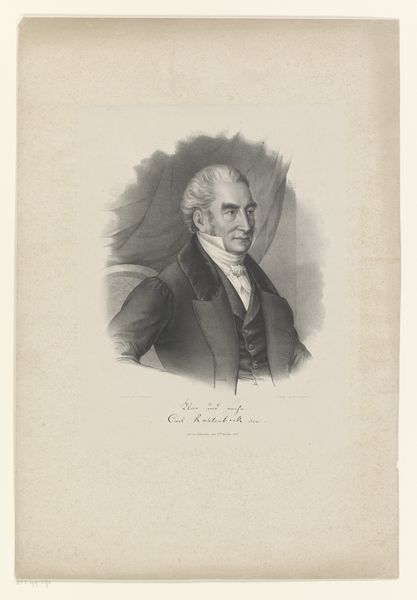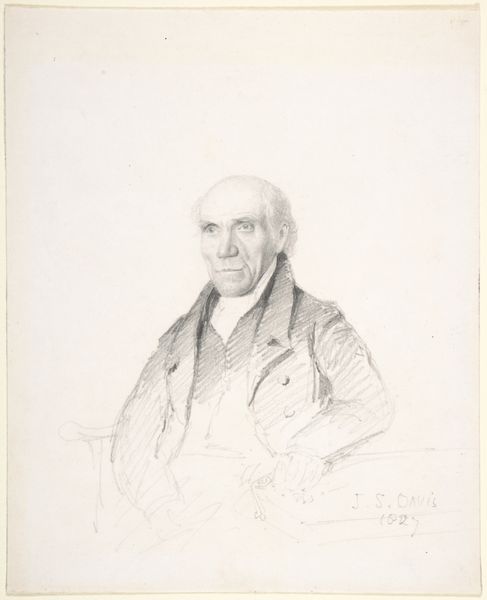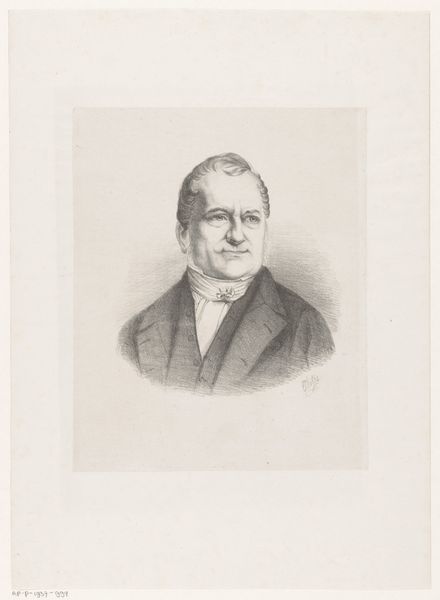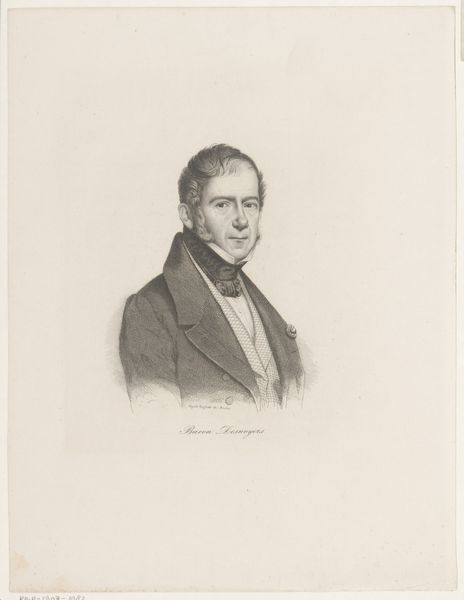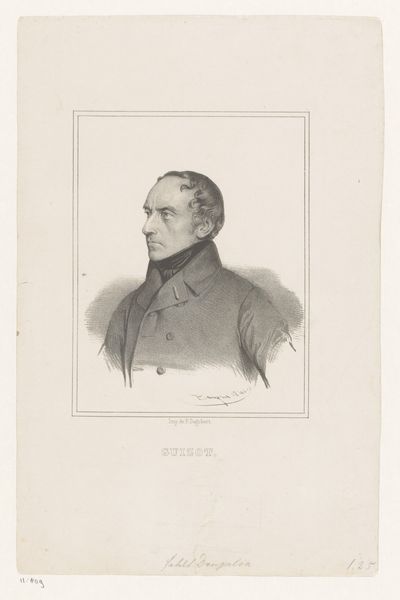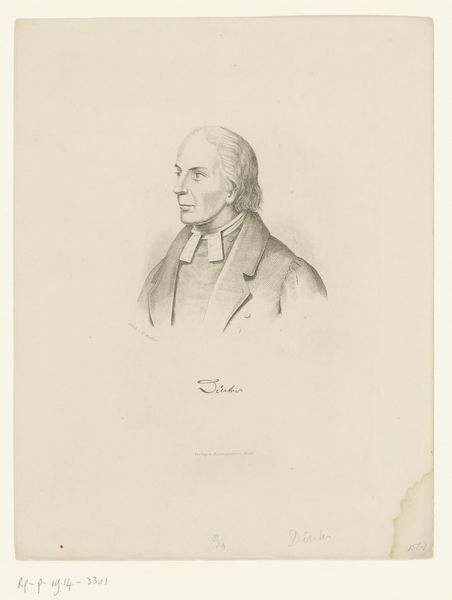
Dimensions: height 170 mm, width 115 mm
Copyright: Rijks Museum: Open Domain
Curator: This engraving captures Philippe Vandermaelen, a cartographer and geographer whose innovations shaped our understanding of the world. Created by François de Meersman between 1840 and 1905, the print portrays a man of intellect and vision. Editor: There’s a certain austerity in the grayscale palette, an air of seriousness that dominates. The precision of the engraving adds to this feeling, a dedication to accurate representation, yet there's an underlying feeling of quiet ambition, or maybe just determined resolve in the man’s gaze. Curator: Indeed, engravings like this served an important symbolic function during the 19th century, imbuing the subject with an air of respectability. It's not just a likeness, but also a carefully constructed image that aimed to perpetuate his achievements for posterity. Editor: The print operates within a framework where image equals influence. The ability to be reproduced and disseminated—to be made visible on a grand scale—signified an expansion of power in a very literal, democratic sense. But who did it include and exclude? We must ask. Curator: True. These images are not neutral documents but curated artifacts that participate in complex historical narratives. It's a memory-object; it calls attention not just to its ostensible subject, Vandermaelen, but also to the values of the world which created it. Look at the engraved signature, for instance. Even the typography invokes trust and integrity. Editor: Right. While Vandermaelen’s individual accomplishments are the focus, it subtly perpetuates a narrative of male authority, of whose contributions are recorded versus not. It highlights questions surrounding representation, reminding us to be mindful of how these historical artifacts contribute to the shaping and sustaining of power dynamics. Curator: Yet, seeing it reminds me of that hunger for understanding the world in a concrete way. Vandermaelen made those geographical representations tangible. It is like seeing how dreams become possible through focused creation. Editor: I’m drawn to seeing the sitter in relation to questions surrounding power, representation, and visual legacy. Engravings played a role, and continue to echo down the corridors of history. Curator: An important point, a necessary contextualization, reminding us how our impressions and ideas gain weight in an image, so long as we keep watching with open eyes.
Comments
No comments
Be the first to comment and join the conversation on the ultimate creative platform.
